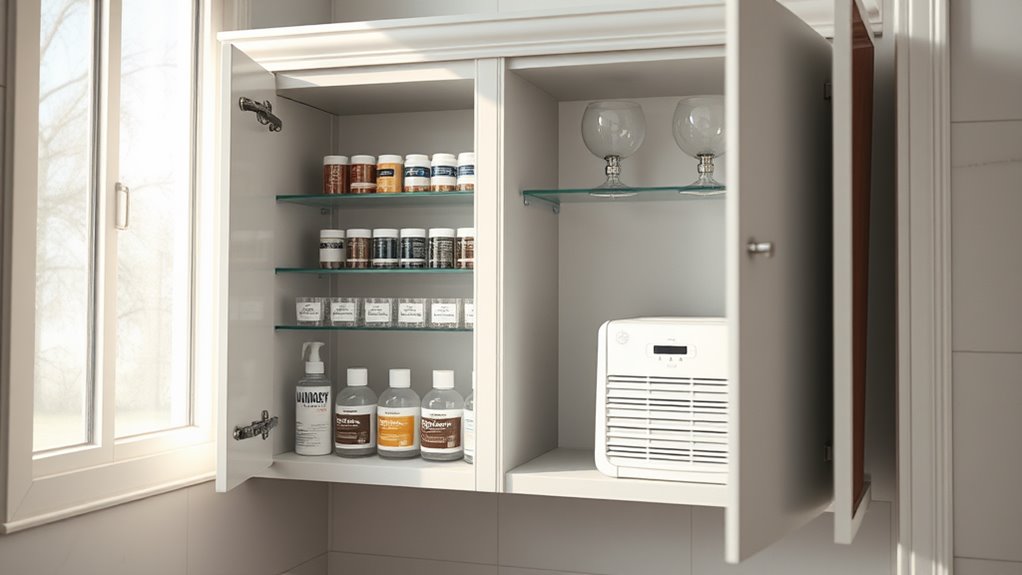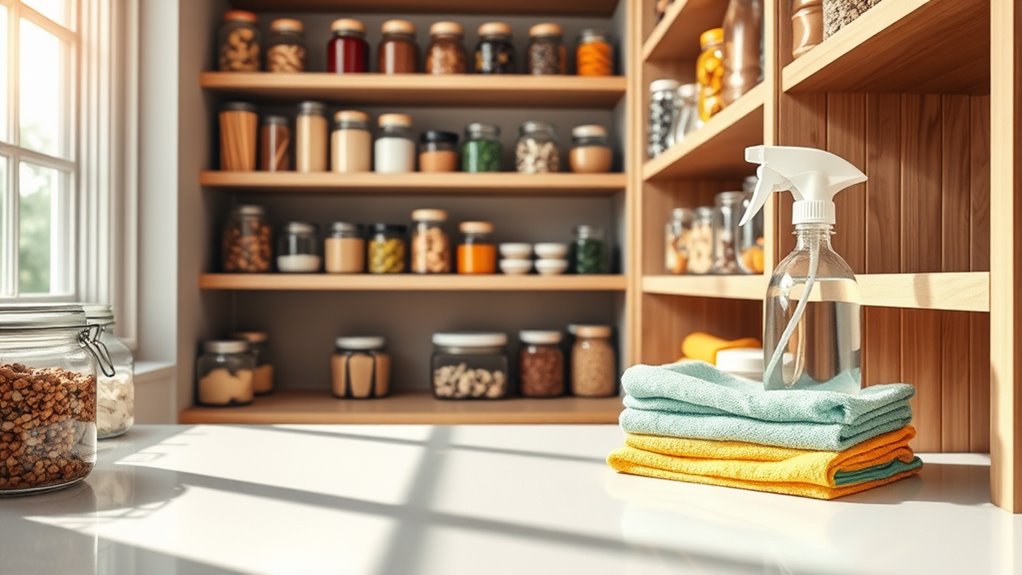My Go-To Routine to Prevent Costly Home Repairs
To prevent costly home repairs, start with a monthly maintenance checklist. Regularly inspect HVAC filters, plumbing for leaks, and frequently touched surfaces. Seasonally, clean gutters, check your heating and cooling systems, and examine your roof. Yearly, conduct thorough inspections of your roof, plumbing, and smoke detectors. Don’t forget to monitor common areas like your foundation and windows for signs of damage. Stick around to discover more essential tips on maintaining your home’s value.
Key Takeaways
- Perform monthly maintenance checks on HVAC systems and plumbing to catch issues early and avoid costly repairs.
- Clean gutters and downspouts regularly to prevent water damage and foundation issues.
- Conduct annual inspections of the roof and plumbing to identify leaks or damage before they escalate.
- Test smoke detectors and GFCI outlets to ensure electrical safety and prevent fire hazards.
- Seal gaps around windows and doors to improve energy efficiency and reduce potential pest invasions.
Monthly Maintenance Checklist
A monthly maintenance checklist can save you time and money while keeping your home in top shape. This routine isn’t just about cleaning; it’s about implementing preventative tips that protect your investment. Regularly addressing overlooked cleaning tasks can significantly enhance your home’s condition. For instance, deep cleaning essential areas, such as frequently touched surfaces, can help maintain a healthy living environment. Additionally, incorporating efficient cleaning routines into your monthly maintenance can streamline your efforts and save valuable time. Streamlining your cleaning process can also reduce the buildup of dirt and grime that leads to larger issues.
Start by inspecting your HVAC system filters and replacing them if needed. Check the smoke detectors and replace batteries if they’re low. Examine plumbing for leaks and guarantee that all faucets are functioning properly. Don’t forget to test your GFCI outlets.
Outside, inspect your roof for damaged shingles and clean gutters to prevent water damage. By dedicating just a few hours each month to these tasks, you’re not only enhancing your home’s longevity but also avoiding costly repairs down the line. Regular maintenance is key to maintaining property value, so make this routine a priority to safeguard your space.
Seasonal Home Care Tasks
While you may think that home maintenance is only a monthly chore, seasonal home care tasks are equally essential for keeping your property in prime condition.
Start by inspecting your gutters and downspouts in the spring and fall; clean them to prevent water damage. Regular deep cleaning routines can also help maintain your home’s overall condition, ensuring an organized living space that enhances efficiency and comfort.
In summer, check your air conditioning unit for efficiency and change the filters.
As autumn approaches, examine your roof for missing shingles and seal any gaps around windows and doors.
Winter calls for checking insulation levels and testing your heating system to confirm it operates smoothly. Don’t forget to winterize outdoor faucets and store garden hoses.
These seasonal tasks not only enhance your home’s longevity but also save you from costly repairs down the line. Additionally, implementing a comprehensive room-by-room seasonal cleaning checklist can further streamline your maintenance routine and ensure no area is neglected.
Annual Inspections and Repairs
After tackling seasonal tasks, it’s time to focus on annual inspections and repairs that keep your home in top shape. These inspections can prevent minor issues from escalating into costly repairs. Prioritize key areas like your roof, plumbing, and electrical systems.
Here’s a quick reference table to guide your annual inspections:
| Area | Inspection Focus | Recommended Frequency |
|---|---|---|
| Roof | Check for leaks/damage | Annually |
| Plumbing | Inspect pipes & fixtures | Annually |
| Electrical | Test smoke detectors | Annually |
Common Areas to Monitor
Homeowners should keep a keen eye on several common areas that can signal potential issues. Start with your roof; missing shingles or sagging can lead to leaks.
Inspect gutters for blockages or rust, as they play an essential role in water drainage. Next, examine your foundation for cracks or moisture, which can indicate structural problems.
Don’t overlook windows and doors; check for gaps that might allow air leaks or pests inside.
Inside, regularly assess plumbing fixtures for leaks and water stains, especially under sinks.
Finally, monitor your HVAC system; unusual noises or inconsistent temperatures can indicate malfunctions.
Tips for Hiring Professionals
How do you choose the right professional for your home repair needs? Start by asking for recommendations from trusted friends or family; their experiences can guide you toward reliable options.
Next, check online reviews and ratings to gauge a professional’s reputation. When you narrow down your choices, interview candidates—ask about their experience, qualifications, and approach to your specific repair.
Always request references and don’t hesitate to follow up with previous clients. Additionally, obtain multiple quotes to make sure you’re getting a fair price.
Finally, make certain they’re licensed and insured, protecting you from potential liabilities. By following these steps, you’ll secure a skilled professional who meets your standards and helps prevent future costly repairs.
Frequently Asked Questions
How Often Should I Check My Smoke Detectors?
You should check your smoke detectors at least once a month to guarantee they’re functioning properly. Replace the batteries twice a year, and consider replacing the units every ten years for maximum safety and performance.
What Are Signs of Water Damage in My Home?
Look for water stains on ceilings or walls, peeling paint, and warped floors. Musty odors or mold growth can also signal trouble. Regularly inspect these areas to catch issues early and prevent further damage.
How Can I Identify Pest Infestations Early?
To identify pest infestations early, regularly inspect for droppings, chewed materials, or unusual sounds. Monitor entry points and check for nests. Acting quickly can prevent further damage and costly extermination. Stay vigilant and proactive!
What Tools Do I Need for Basic Home Maintenance?
For basic home maintenance, you’ll need essential tools like a hammer, screwdrivers, pliers, a wrench set, a tape measure, and a level. These tools help you effectively tackle repairs and keep your home in top shape.
Are There Home Warranties Worth Considering?
When considering home warranties, evaluate coverage details, exclusions, and costs. Compare multiple providers, and assess your home’s age and condition. A well-chosen warranty can save you money and stress during unexpected repairs.



